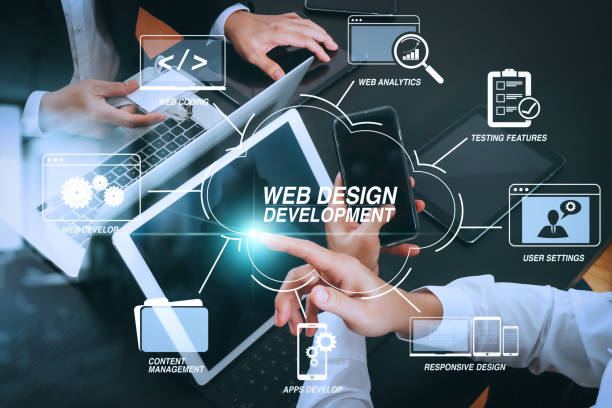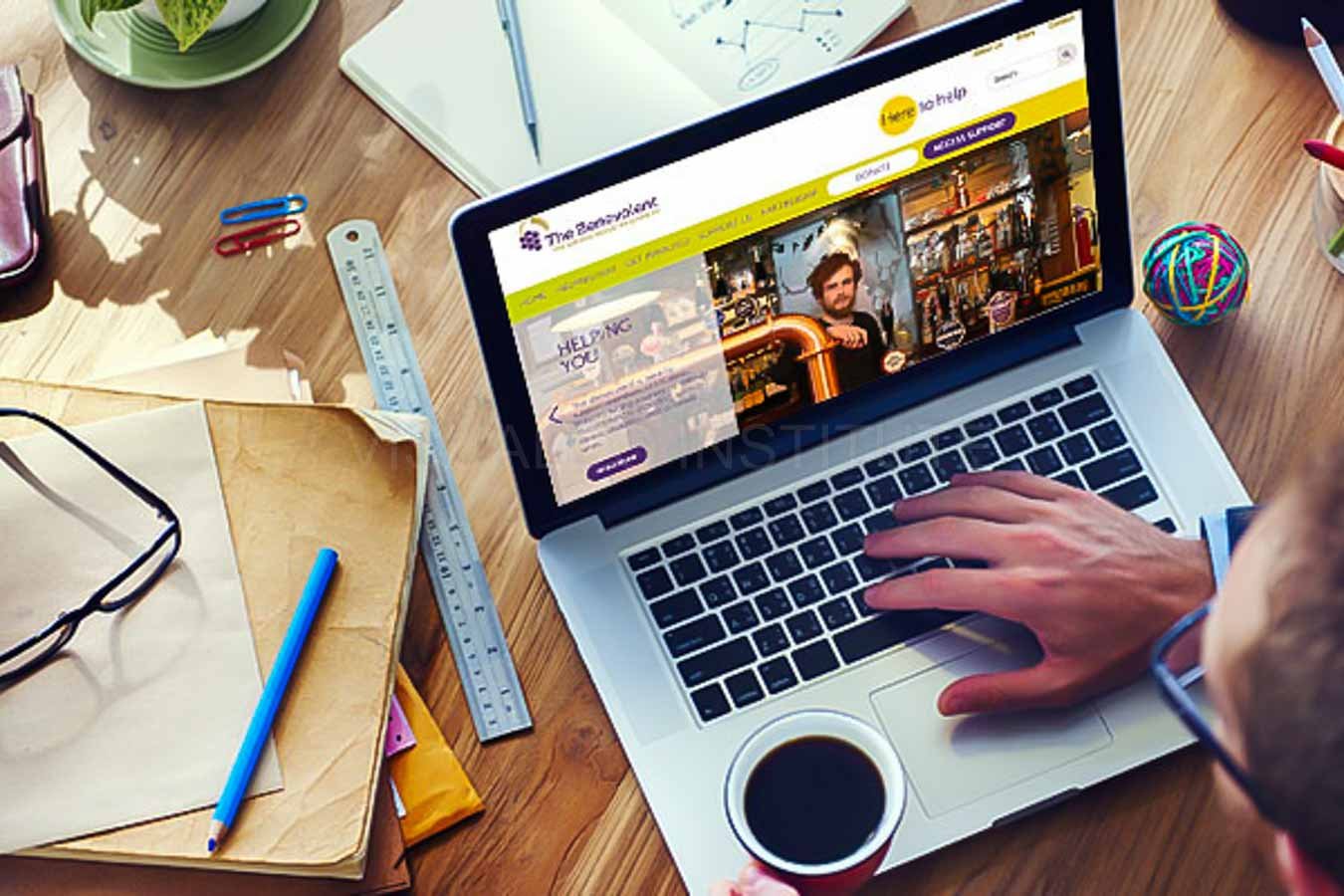Professional Aligned Position Web Design: Custom Websites Tailored to Your Business Needs
Professional Aligned Position Web Design: Custom Websites Tailored to Your Business Needs
Blog Article
The Most Effective Kinds Of Web Style to Boost Individual Experience and Engagement
In the ever-evolving landscape of electronic communication, the efficiency of Web layout dramatically impacts customer experience and involvement. Numerous style strategies, such as minimalist, responsive, and interactive layouts, each offer distinct advantages that can cater to diverse user needs.
Minimalist Website Design
As digital landscapes become increasingly cluttered, minimalist Web design has actually arised as an effective strategy to boosting individual experience. This layout ideology prioritizes simplicity, concentrating on crucial elements while removing unneeded diversions. By utilizing ample white area, straightforward navigation, and a restricted shade scheme, minimalist layout cultivates quality and directs individual focus to key content.
The core principle of minimalist Web layout is to produce a seamless communication for customers. By reducing cognitive tons, customers can swiftly grasp details without really feeling bewildered. This direct approach not only enhances functionality but likewise motivates interaction, as site visitors are more likely to explore a website that is simple and visually enticing to navigate.
Furthermore, minimalist layout commonly highlights typography and imagery, utilizing these elements tactically to convey messages successfully. This emphasis on important parts can boost brand identification and create an unforgettable user experience. Fundamentally, minimal Web layout is not simply a fad; it is a thoughtful method that identifies the importance of user-centered style. By removing extraneous aspects, developers can produce a much more engaging, effective, and delightful Web experience for all individuals.
Receptive Website Design
In today's diverse digital atmosphere, responsive website design has actually come to be essential for creating a seamless user experience across a multitude of devices. As customers accessibility websites on smartphones, laptop computers, tablet computers, and desktop computers, the capability of an internet site to adjust its format and web content to various screen sizes and resolutions is essential.
Responsive website design uses versatile grids, photos, and CSS media queries to ensure that Web material is provided efficiently, no matter the tool made use of. This strategy not just improves the visual allure of a web site however likewise substantially improves use. Individuals are much more likely to involve with a website that provides a regular experience, as it gets rid of the irritation of needing to focus or scroll exceedingly.
Furthermore, online search engine, including Google, focus on mobile-friendly websites in search positions. By embracing responsive layout, companies can boost their exposure and reach a wider target market. This approach additionally simplifies web site maintenance, as a solitary version of the website can cater to all gadgets, reducing the requirement for multiple versions. In recap, responsive website design is a fundamental method that boosts individual experience, interaction, and total satisfaction.
Interactive Website Design
Receptive Web design prepares for improving customer experience, however interactive website design takes this a step even more by engaging users in an extra dynamic way - Aligned Position Web Design. By including components such as computer animations, clickable prototypes, and real-time feedback, interactive Web navigate to these guys design mesmerizes individuals, attracting them into a richer browsing experience
This method not just promotes interaction yet additionally encourages users to check out content actively rather than passively consuming it. Techniques such as gamification, where users make benefits for completing jobs, can substantially improve the moment invested on a site and enhance overall contentment. Interactive functions can simplify complex details, making it more digestible and enjoyable.

Integrating interactive layout elements can likewise bring about higher conversion prices, as customers are most likely to involve with a website that actively includes them. Aligned Position Web Design. Eventually, interactive Web layout transforms individual experiences right into memorable journeys, making sure that visitors return time after time
Apartment Design
Characterized by its minimalistic strategy, flat design emphasizes simpleness and performance, stripping away unneeded elements and focusing on necessary attributes. This style ideology focuses on use, making sure that customers can browse user interfaces effortlessly and performance. By utilizing a clean visual, level layout removes the mess commonly discovered in a lot more elaborate styles, consequently boosting individual emphasis on content and functionality.
The trademark of read here level design hinges on its use of vibrant shades, basic typography, and geometric shapes. These elements add to an aesthetically attractive interface that is both friendly and modern-day. Furthermore, flat layout promotes a sense of quality, permitting individuals to determine vital actions and info without distraction.
Furthermore, level design is specifically efficient in responsive website design, as its simplicity converts well across numerous gadgets and display sizes. The lack of detailed structures and gradients lessens loading times, which is critical for preserving customer interaction. As digital landscapes remain to evolve, flat layout stays a pertinent option for creating straightforward sites that boost overall experience. By concentrating on important attributes, flat layout not only satisfies customer requirements yet also encourages seamless communication, making it a vital element of reliable website design techniques.
Adaptive Web Layout
Flexible website design customizes the user experience by creating multiple repaired designs customized to various screen sizes and gadgets. Unlike responsive style, which fluidly changes a solitary design, adaptive design employs distinct layouts for particular breakpoints, making sure ideal presentation on various platforms. This approach allows designers to concentrate on the distinct attributes of each device, improving usability by Discover More Here providing precisely what users need based upon their context.
Among the key benefits of flexible Web style is its capability to optimize tons times and efficiency. By serving tailored web content and photos that fit the individual's gadget, websites can minimize information use and enhance loading speeds. This is specifically beneficial for customers with slower connections or limited information plans.

Additionally, adaptive layout helps with an extra controlled and constant branding experience. Considering that designers produce multiple designs, they can make sure that the visual components straighten with the brand name's identification across different platforms - Aligned Position Web Design. This results in a natural user experience, enhancing engagement and promoting customer retention
Verdict
Minimal layout cultivates quality and emphasis, while responsive design makes certain adaptability throughout various tools, promoting availability. Jointly, these style comes close to contribute to the production of user-friendly atmospheres that not just boost complete satisfaction yet likewise drive higher conversion prices, underscoring their important significance in contemporary Web design techniques.

Minimal layout fosters quality and emphasis, while receptive layout makes sure adaptability across various tools, promoting access. Collectively, these style approaches contribute to the production of easy to use settings that not just enhance satisfaction however likewise drive higher conversion prices, emphasizing their critical value in modern Web layout methods.
Report this page